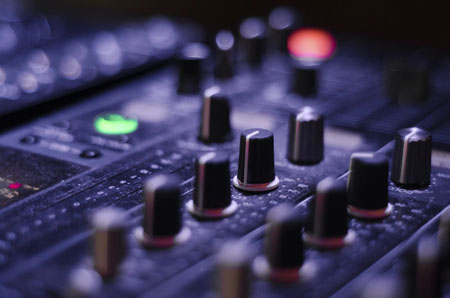As streaming becomes the preferred way for listeners to consume music, producers are racing to come up with new solutions for delivering the highest possible audio quality. Automated music mastering is one method gaining popularity among amateur and professional producers alike; it provides the promise of professional, high-quality mastering with minimal effort. While this automation certainly has its advantages, as with any new technology, it has both benefits and drawbacks to consider as it impacts digital music production today.
1. Introduction to Automated Music Mastering
Automated music mastering is an emerging technology that uses sophisticated software algorithms to process audio masters that are ready for commercial release. It is more efficient than manual music mastering as it requires significantly less time and effort while still providing the same quality to the end result.
The process begins by taking your mixed audio and applying a standard set of algorithms to it, such as EQ, compression, limiting, and stereo width. Automated mastering also features some unique and powerful plugins, such as transient mastering, frequency-specific EQ, and multi-band compression. This allows you to customize your sound to get the exact result you want.
- Equalization: this process can be used to adjust various frequencies to achieve the desired results.
- Compression: when used properly, compression can help to create a fuller and more balanced sound.
- Limiting: this process prevents the audio from exceeding the desired playback intensity.
- Stereo Width: this is used to improve the overall width of the mix.
- Transient Mastering: this is a process that adds presence and clarity to the track.
- Frequency-Specific EQ: this allows you to make adjustments to specific frequencies.
- Multi-Band Compression: this is used to control multiple frequency-ranges at once.

2. Advantages of Automated Music Mastering
The ever-evolving music industry has seen a multitude of modern advancements in mastering. Automated mastering has become a preferred method of bringing songs and albums to the masses quickly and efficiently, giving artists more time and resources to focus on their craft.
- The :
- Songs are mastered faster and with a greater degree of accuracy, giving artists optimal sound quality.
- Instant feedback through Drastically reduce mastering time due to the elimination of lengthy production, allowing the artist to have full creative control over their music.
- Cost-effective compared to manual mastering, as automated mastering significantly reduces the cost of producing an album.
- Automated mastering can be used on any genre of music, whether it is rock, pop, jazz, hip-hop, or EDM.
- Real-time streaming services, podcasts, and mobile devices benefit from numerous mastering services that are difficult to produce with traditional methods.
- Brighten up dull bass parts and make muddy low-end tracks sound clearer and more present.
- Makes artistic decisions faster, allowing for faster release times for albums and singles.
Automated music mastering is a powerful tool that can revolutionize the music industry. With the ability to master a track quickly, accurately, and cost-effectively, artists are able to unleash their potential faster than ever before and bring their music to life.

3. Challenges of Automated Music Mastering
Automated music mastering processes offer a range of benefits for busy and modern music producers. However, they also present a unique set of challenges that must be addressed in order to get the desired aesthetic. Here are a few of the drawbacks and potential pitfalls that come with automated audio mastering:
- Loss of Dynamics – Automated mastering can result in the entire track being leveled and compressed, producing a stilted, lifeless sound.
- No Special Treatment - Without a human mixer to listen to the track as a whole, automated mastering cannot adjust levels or add special treatments like compression or equalization to certain parts of the track.
- Software Issues – The quality of the results depends on the software used, which can be inconsistent in both its reliability and in the quality of mastering results.
Despite the drawbacks, automated music mastering can still be a valuable tool in the hands of an experienced and knowledgeable user. With a bit of practice and familiarity with the process, producers can find ways to use it to great advantage in their work.

4. Best Practice Recommendations for Streamed Music Mastering
Consolidate the file formats: when you’re mastered for streaming, aim to consolidate your master so that you don’t end up creating multiple variations in different formats. Similarly, you should aim to have your masters created in full-resolution formats and not compressed-audio formats.
Check with the Streaming Providers: it pays to check the streaming platform’s technical requirements. Check whether a production house offers any special formatting services and see if the distributor has standardized protocols of what’s required for submission. That way, you can make sure the mastered audio adheres to the platform’s guidelines.
- Use a high-quality signal chain.
- Maximize the loudness of the audio.
- Keep the tracks consistent.
- Monitor the sound in a variety of environments.
- Ensure each track follows good mastering practices.
Automated music mastering for streaming can be tricky, but by taking the time to understand the pros and cons of the technology, artists can ensure that their music sounds the absolute best for any listener. By streamlining the mastering process, automated music mastering for streaming is a great tool for busy creatives. With its power, the future of streaming music is now limitless.

